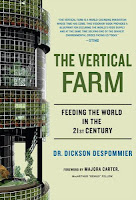 The Primal Blueprint. Paleo/Paleolithic/Caveman/Stone Age Diet. Neanderthin. These are all lifestyles or diets advocating a return to consuming foods grown/raised in the manner in which they evolved. For example, consuming beef that is grass-fed instead of corn fed, as cows evolved to eat grass and must be given antibiotics to process corn.
The Primal Blueprint. Paleo/Paleolithic/Caveman/Stone Age Diet. Neanderthin. These are all lifestyles or diets advocating a return to consuming foods grown/raised in the manner in which they evolved. For example, consuming beef that is grass-fed instead of corn fed, as cows evolved to eat grass and must be given antibiotics to process corn.While I laud the "return to nature" philosophy, and I myself follow the Primal Blueprint, there are a few major problems common to all of these lifestyles. The diets are designed based on the presumed foods of paleolithic humans. Emphasis on presumed. In fact, the difference of opinion on just what paleolithic humans ate is why we have the different diets.
Proponents argue humans have been evolving for millions of years on a certain diet and with the advent of agriculture only in the last 10,000 years, we have not had enough time to evolve to eat these new crops. While I agree agriculture is the root of today's health problems, I disagree with the premise it is a time issue. The tomato of today is a far cry from what it was over 10,000 years ago and I think the same can be said of most mass-consumed crops; they have been cross-bred or genetically altered. If humans haven't evolved to eat soybeans in the last 10,000 years, they certainly haven't evolved to eat genetically modified soybeans that have only been around since 1996. The time to evolve becomes irrelevant as we continually introduce new versions of genetically mutilated seeds. The "clock" is constantly reset.
This brings up a second problem with these lifestyles - sustainable sources of quality, clean, foods. For instance, the Primal Blueprint advocates consuming wild vs. factory farm salmon, but as more people learn the benefits of salmon, salmon become over-fished. In Alaska many salmon come from hatcheries and are then released into the wild in order to ensure the salmon stock. Nature cannot keep up with demand so we develop Concentrated Animal Feeding Operations, (CAFOs) for the seas. Primal followers are well aware of the laundry list of problems CAFOs have introduced.
These days I feel "wild" is more of a marketing gimmick. I have yet to come across a stream/river/pond/lake that doesn't have some sort of pollution in it. There is an enormous garbage patch out in the Pacific Ocean. We have polluted the environment to an extent I think most marine life has been exposed in some way. I'm not interested in eating wild-caught anything that has been living in such a polluted environment.
 |
| Photo: Scripps Institution of Oceanography |
I started in aquaponics because I needed a source of nutrient-dense foods that I could ensure were available year round, local, but just as importantly, it had to be sustainable, highly productive with little to no impact on the environment. The food needed to be clean to ensure the health of my family. Aquaponics is not just a solution, but the ideal solution for Primal/Paleo followers. It is a closed source ecosystem that doesn't mimic nature - it is nature. Think about it: It's mid-January and you are preparing your 2 Minute Primal Salad with ingredients grown in your own home. You aren't running to the store for produce that is more expensive this week because of a drought in Mexico. You don't have to worry about purchasing old produce from two weeks ago because the re-supply trucks haven't arrived yet. And forget about those tomatoes that were picked before they were ripe and ripened en-route to you with gas.
Aquaponics is a highly productive, year-round means of growing nutrient-dense foods using the same methods nature employs, but in your own home. It's the best mix of nature and 21st century technology with a true Primal intent.
----------



